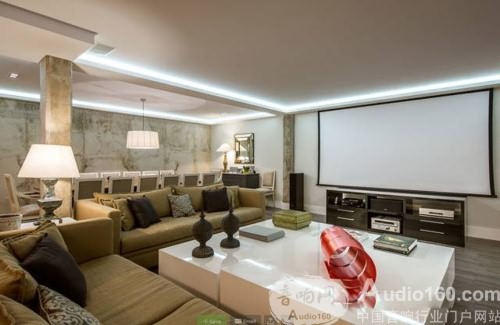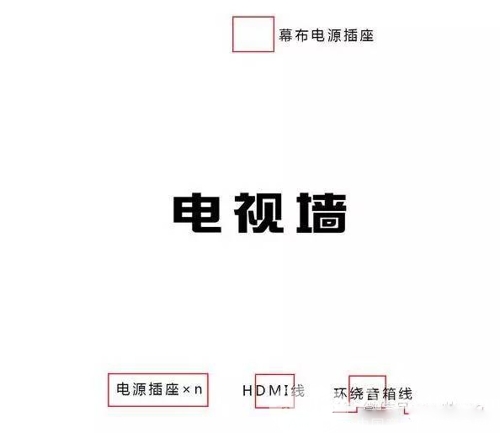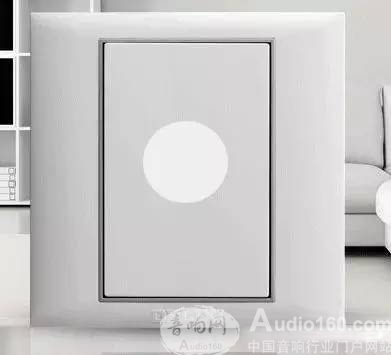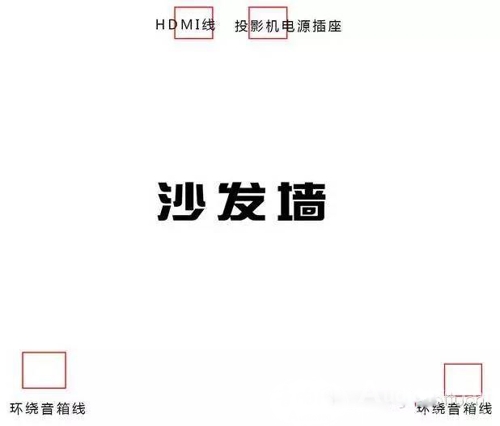When it comes to the choice of projectors, screen selection, installation, debugging, etc. in the home theater, you have to mention the wiring problem. So, let’s talk about how to route the living room theater today.

The wiring of the living room theater is actually very simple, as long as you understand which sockets are available. Let's take a look at the video wall.

Below the TV wall is a traditional power outlet. The number of sockets is personal. My suggestion is to install two or three power outlets. Perhaps you will say that there are more electrical appliances connected here, and two or three are definitely not enough. Yes, it is not enough. My suggestion is to use the power strip to plug in all the electrical equipment, and the power strip is not cheap, choose a big brand, lightning-proof power strip. Next to the power socket is the HDMI cable pre-embedded from the projector installation, and then the two surround speaker cables pre-embedded from both sides of the sofa wall. These two panels can be perforated in the middle with blank panels.

Speaking of blank panels, the above picture is common in China, and the following picture is a dedicated threading panel that I have seen on foreign websites, but unfortunately not seen in the domestic market.

Back to the wiring, the HDMI cable should be reserved with 1m redundancy to facilitate the connection of the amplifier, and the two surround speaker cables also need to reserve 1m of redundancy. There should also be a power outlet on the TV wall. Because most people are not sure if their screen power cable is on the left or right side of the decoration, it is more suitable to stay in the middle. It should be remembered that this curtain power socket is best installed on the ceiling in the curtain slot, so that it will not affect the decoration style.
Let's take a look at the situation on the sofa wall. This is very simple.

The first is that the two sides of the sofa wall are surrounded by speaker cable panels, the same applies to the blank panel. Here, it is better to have more redundancy around the speaker cable. Personally, it is recommended to be around 1m to 1.5m. Then on the sofa wall, you need two sockets, one is a blank socket for the HDMI cable that is embedded from the TV wall, and the other is a power socket for connecting the projector. It is more appropriate to have an HDMI cable that is about 50cm redundant.
After reading these two pictures, you should understand which lines need to be buried in the living room theater. The first is the HDMI cable, which is used for video transmission of the projector. The approximate algorithm of length is: living room width + sofa wall height (generally 3 meters) + redundant length at both ends + regular redundancy. Calculated in a living room with a maximum family width of 4 meters, roughly 4+3+1+0.5=8.5 meters. This is, it is certainly enough to buy a 10 meter HDMI cable. Some students with sufficient budget can pre-bury 2 HDMI cables to prevent HDMI cable damage.
Followed by the surround speaker cable, there are two need to be laid out, the length is roughly equivalent to the HDMI cable.
To sum up, the main point of wiring is to reflect the planning, and then remember that the exposed line must be redundant.
Displacement sensor, also known as linear sensor, is a linear device belonging to metal induction. The function of the sensor is to convert various measured physical quantities into electricity. In the production process, the measurement of displacement is generally divided into measuring the physical size and mechanical displacement. According to the different forms of the measured variable, the displacement sensor can be divided into two types: analog and digital. The analog type can be divided into two types: physical property type and structural type. Commonly used displacement sensors are mostly analog structures, including potentiometer-type displacement sensors, inductive displacement sensors, self-aligning machines, capacitive displacement sensors, eddy current displacement sensors, Hall-type displacement sensors, etc. An important advantage of the digital displacement sensor is that it is convenient to send the signal directly into the computer system. This kind of sensor is developing rapidly, and its application is increasingly widespread.
Magnetic Scale Linear Encoder,Magnetic Scale Encoder,Encoder Software,Encoder Meaning
Changchun Guangxing Sensing Technology Co.LTD , https://www.gx-encoder.com